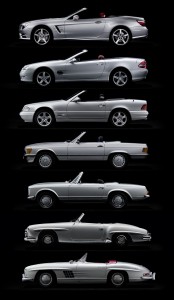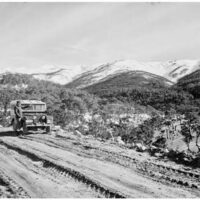https://soundcloud.com/db_drivenmedia/mercedes-three-cars-the-practical-the-frugal-and-the-sleek
Transcript of interview
David B: I’ve had a drive of three new Mercedes models just the other day, they range from the practical to the frugal and on to the sporty/exotic. To give us some background on these cars I have on the line Mercedes senior executive for Public Relations, Product and Corporate Communications, David McCarthy. David, thanks very much for your time.
David McCarthy: Pleasure David.
David B: Let’s start with the practical the C Class Estate now I know I’m not allowed to call it a station wagon am I?
David McC Look if you buy one David you can call it whatever you want.
David B: Stations wagons, are they an important part of the C class sales pitch?
David McC Look they are, in the previous generation car we did quite well with it. What we’re actually seeing is a little bit of a trend with our E class estate we did quite nicely. And C Class Estate I think we will too. A lot of the time people will come into buy an SUV and they’ll look at that and then they’ll look at the previously, and obviously the new one, with the C Class estate and the E Class Estate. They’ll think okay.
In terms of the load carrying ability it’s not that far off an SUV. The E class Estate is a seven seater. It has those two rear facing seats right at the back, but everything that we love about the C class is duplicated in the estate. It’s a very, very dynamic car. Great ride, great range of engines and has the added versatility of being an Estate.
You can fold the seat 40, 20 or 40 so the middle you can actually fold down so you can still carry a passenger on each side. If you got some very long skis, or fishing rods, or curtain rods, or whatever you can use that.
David B: Something long and thin can fit between the two seats and still leave two other people on the other side. Now going to an SUV being taller and not quite handling, necessarily as much as a passenger vehicle.
David McC Correct and whilst all SUVs not least ours do handle very well there is a passenger car experience certainly I prefer personally. Feedback from buyers is they actually like a choice. I like to say you have the choice of luxury or the luxury of choice.
David B: And there are full range with most of the engines. But you won’t have the hybrid with the Estate version will you?
David McC No look unfortunately, I would like it, but let’s see how the hybrid sedan goes. We have a 200 petrol, a 250 petrol and a 250 diesel. We will have a 200 diesel in about March/April next year, but there isn’t the hybrid currently. There will be, later next year, probably mid-year there will be the AMG version of the C63 Estate. If you want a bit more power David 375 kilowatts should do it.
David B: That’s not just a bit more that’s big for what is classified as a medium sized car in the Australian market I’d call it more small. Talking about the hybrid I drove the sedan hybrid that you had there. That was a real big surprise for me, not that the others were bad or anything. But in sport mode has some really great response to it, pick up throttle response.
I really think that’s good. Now it’s an unusual hybrid isn’t it because it’s a diesel engine.
David McC It is, most hybrids in Australia are petrol engines with electric engine motor. This is a diesel and the advantage of that is, you’re already a bit ahead of the game in terms of fuel consumption. The electric assistance that the hybrid provides certainly at very low speeds around town it will drive on electric power.
But also when you need extra power the electric engine will assist the diesel engine. Whilst the petrol engine has 155 kilowatts and 500 Newton meters, the electric motor I think is about 25 kilowatts but 250 Newton meters. Whilst you don’t get 750 Newton meters because obviously you can’t use all of it but you do get an added boost when you’re wanting to.
One of the great things about this, we call it sailing. When you’re on the highway or on a flat road, on a light throttle, the system might decide we actually don’t need the engine on and it will use electric power to power the car. The car itself is rated at around four litres per hundred kilometres and that is very achievable in everyday use.
David B: It’s got twin turbo chargers on the diesel, which along with the electric motor will reduce turbo lag that you might get?
David McC It does yeah. Torque is available very down low around 1,000 RPM from start full torque and personally I prefer the diesel driving experience. I like that torque thicker in modern traffic conditions. Having the ability to assist that torque with the electric motor, or to actually just run them on purely electric it has a range of a couple of kilometres maximum depending on conditions just on electric power. It is the best of both worlds.
David B: What percentage of vehicles do you think of the C class might be hybrids that you might sell?
David McC Look we’re probably on track to do say, I don’t know, 7,000 or 8,000 C classes will be more next year. I think 200 to 300 hybrids I’d be very happy with that. I’ve been a big advocate of getting this car here.
I think when people actually drive it they’ll go yes I might have this. It’s, of course, like all C classes it’s priced under the luxury car tax because it does less than in seven litres per 100 kilometres. Whilst you might be happy probably the treasurer may not. The treasurer in your own house will be happy though.
David B: What will they sell for? What’s the price on them?
David McC $74,990 and there are a couple of options available on the car but it comes very well equipped. I think the car you drove yesterday was a standard car. It is certainly within the reach of a lot of people.
David B: Now we must get to the sports car the SL. Your sport is a two door coupe, it’s a roadster. It’s got a fold back hard top convertible which goes for it. Now the SL name has been around for an awful long time.
David McC Since 1954, it’s the longest continuous production name plate for a passenger car so 60 years. It’s quite a long time. The SL, I think most people when they think of an SL will think of perhaps the SL Gullwing from the 50’s, the SL Roadster but probably the Pagoda from the 1960’s.
Very, very beautifully designed car but look it’s a two seat, folding hard top. The model we just launched the SL400 it’s a twin turbo V6, 245 kilowatts, almost as fast, David, as the 500 V8. I think better on fuel and I think a pretty nice car. It’s that nice mix of luxury and sport and roof up it’s like a coupe and roof down it’s a convertible.
It really can suit your mood.
David B: I think it’s quite elegant. You have a shape about it big, long bonnet. Big grill on the front there that even goes back to 1954 a bit too. I think you’ve managed to hold that sort of heritage part of it and I believe the 1954 one was actually fuel injected which was great technology I think at that time.
David McC It was I think and look I’m sure your listeners will correct me if I’m wrong but I have a feeling it might have been the first mass produced fuel injection passenger car. It was certainly way ahead of its time. The engine in the 300 SL back then it was based on the 300 sedan engine otherwise known or the 300 sedan otherwise known as the Arveneur after the German chancellor at the time because he favoured them.
That was a pretty advanced car for its time and of course the SL had a lot of racing success. Probably the most famous was with Sterling Moss in the Mille Miglia. But it’s not a racing car now but it’s certainly a high performance convertible and I like to think of it as the perhaps the best interpretation of modern luxury.
David B: An elegant touring car, perfect for the countryside as well as looking good in the city. David lovely to talk to you, thank you very much for your time.
David McC A pleasure David.
David B: That’s David McCarthy, the senior manager for Public Relations, Product and Corporate Communications for Mercedes-Benz Australia.







